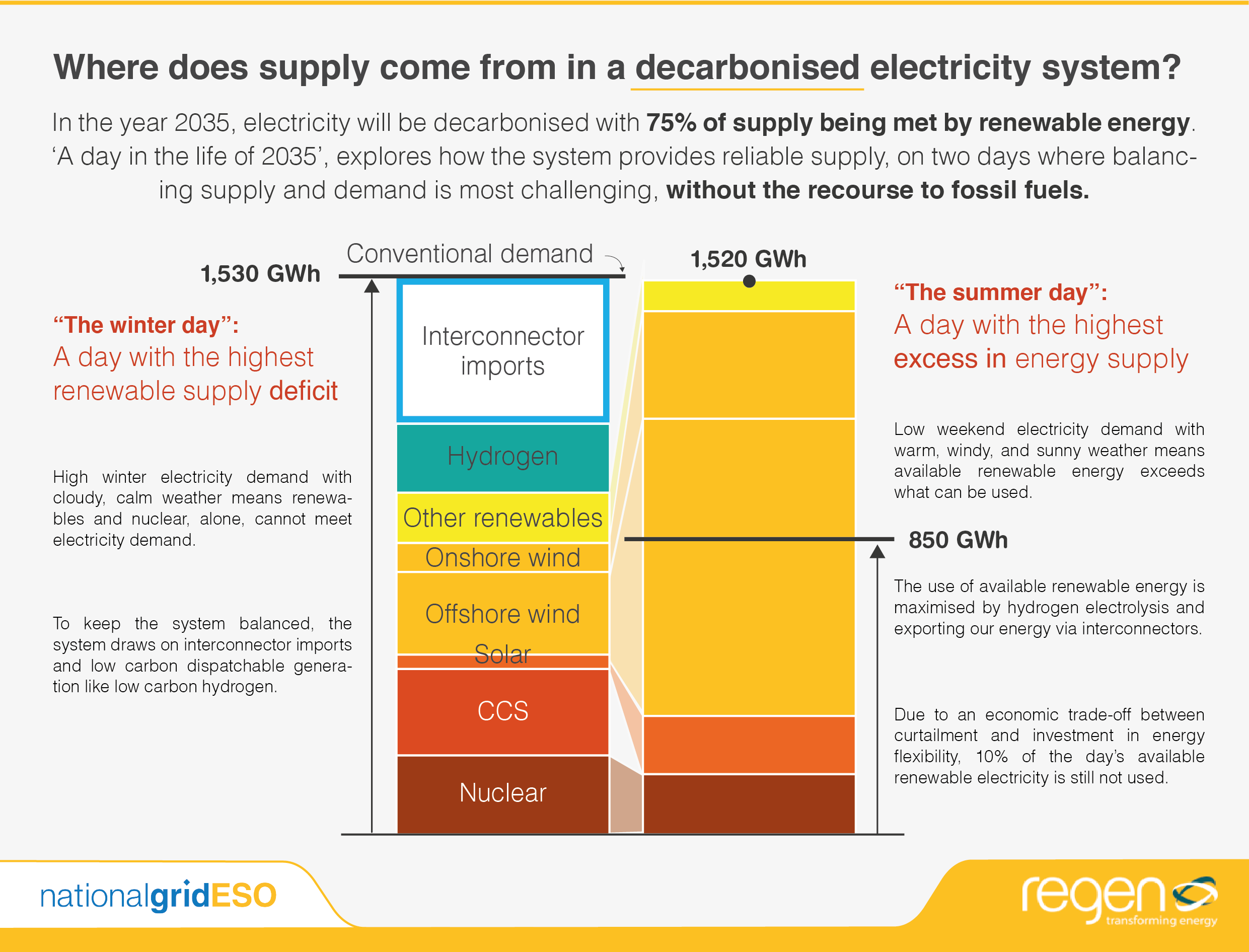Last month we published a landmark report with National Grid ESO exploring a day in the life of our future decarbonised energy system. Co-author Sophie Whinney, an energy analyst at Regen, discusses the key takeaways.

To really get to know someone, you’ve got to see them on their toughest days. Our project looking at a day in the life of 2035 decarbonised electricity does exactly this.
While the overarching takeaway is a hopeful one – there is such a thing as reliable, decarbonised electricity – we arrived at this conclusion by seeing how the system would fare on two days in which system balancing is most challenging.
Why do we focus on more challenging days for the energy system?
The last decade has seen a dramatic shift away from coal power and to deployment of 47 GW of renewable energy, which has contributed to a 50% reduction in annual territorial carbon emissions compared to 1990. By 2035, electricity must be supplied predominantly by renewables – solar, wind, and a small contribution from other sources such as geothermal and tidal; this future renewable based system will need to be more dynamic, reactive and agile to ensure security of supply.
By showing the tough days for a renewable based system, our day in the life story shows off the many technologies and innovations which have a role to play in making an efficient, reliable renewable electricity system.
Key areas of change by 2035
The major areas for change identified in our report are fundamental to decarbonising the whole of the UK economy, and therefore also in keeping 1.5 degrees within reach. There are other added benefits too: solar and wind are the cheapest forms of electricity (onshore wind being the cheapest of all), and we won’t be as reliant on global gas markets.
While different projected scenarios have some wriggle room on the exact numbers, we’ve got a clear idea of the scale of change; it will require a massive increase in the rate of deployment of renewables (especially considering that in England, that rate was precisely zero onshore wind farms a year in 2021).
The current reliance on global gas markets will be exchanged for a dependence on changeable weather – more statistically predictable, but nonetheless variable. As such, the way we operate the grid will need to adapt to continue to provide reliable electricity. We discuss some of the things which need to be in place in the report, such as:
- Energy flexibility: electricity storage, low carbon dispatchable generation, interconnection, and demand side flexibility.
- Renewable diversity: sourcing renewable energy from across the UK to access different weather windows, and investing in a range of technologies with different electricity production profiles.
- Increased operability and digitisation: greater data visibility and automation, enabling greater attention to be given to whole system balancing. The ESO has set out their operability strategy in a report.
Given the scale of change needed, it is no surprise that there are outstanding technological challenges in this list. Some of the required technologies/sectors are still in their infancy, because they don’t yet have a strong business case to support the growth and innovation needed. We highlight these outstanding challenges as uncertainties in our picture of the 2035 electricity system.
The final takeaway of the project is that, whilst we can model a 2035 decarbonised electricity system that works without using fossil fuels, this future is far from certain. To make this model a reality, we need a renewable energy renaissance and to bring together all the above supporting components. This will require substantial, coordinated investment and the mobilisation of all parts of the energy industry, business and energy consumers.
Sophie Whinney is co-author of our ‘A day in the life of 2035’ report. Take a look at the project, or read the publication.

